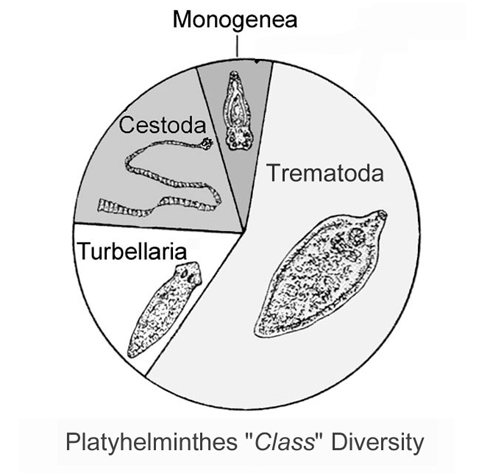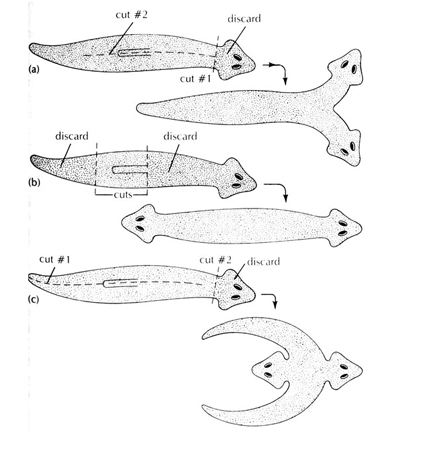
Platyhelminthes, flatworms
http://www.earthlife.net/inverts/platyhelminthes.html
The majority of this group is parasitic such as the groups Mongenea, Cestoda and Trematoda. Free living forms are found in fresh and marine waters as well as terrestrial environments and known as Turbellarians.

Species can be long, but appropriately called flatworms since they lack a body cavity of any sort and so are thin or "flat" in cross section.
Flatworms are considered triploblastic, meaning there are three germ layers in the embryo (ectoderm,endoderm and mesoderm) and so a layer that gives rise to connective tissue and muscle in the adult. They then use muscle as well as ventral cilia to move.
Although lacking most organs they do have protonephridia or simple excretory systems, mainly used to facilitate the maintenance of osmotic balance. Exchange of oxygen and carbon dioxide is accomplished through diffusion. http://www.biology.ualberta.ca/courses.hp/zool250/animations/Excretion.swf
They have a fairly well developed digestive tract, although there is no anus.
The reproductive system is well developed. They are hermaphrodites that "fight" for the privilege of transferring sperm to their partners.
https://www.youtube.com/watch?v=wn3xluIRh1Y
One unique feature is the possession of neoblasts which in some species can make up 30% of the body cells. These cells are essentially equivalent to our stem cells and allow the worm to quickly heal when wounded, or often regenerate if fragmented into pieces. There are scientists at our vet school that are engaged in research on neoblasts, using them as models of "stem" cells.

Again, the clade is divided into four groups (or smaller clades), three of which are parasitic. Examine this link to the parasitic groups. You probably have heard of a few of the more common parasites. Puppies for example often harbor tapeworms.
Not much is know about their phylogeny probably because as soft bodied animals they did not preserve well. They are thought to be as old as the Cambrian.http://tolweb.org/Bilateria/2459
The free living forms or Turbellaria contain the acoels, a very simple group lacking complex reproductive organs or digestive system. Examine the structure of a typical acoel at the website below.
http://turbellaria.umaine.edu/globalworming/acoelscheme2.html#
Some taxonomists feel they are not closely related to the other free living forms and may in fact belong in a clade separate from that of Platyhelminthes or at least tubellarians. Their importance is that although extant species are highly specialized they are among the simplest three layer worms. The most recent common ancestor (the form that gave rise to the rest of the metazoans) which was thought to be a "worm", might then it have looked like a free living turbellarian or even a simpler acoel.